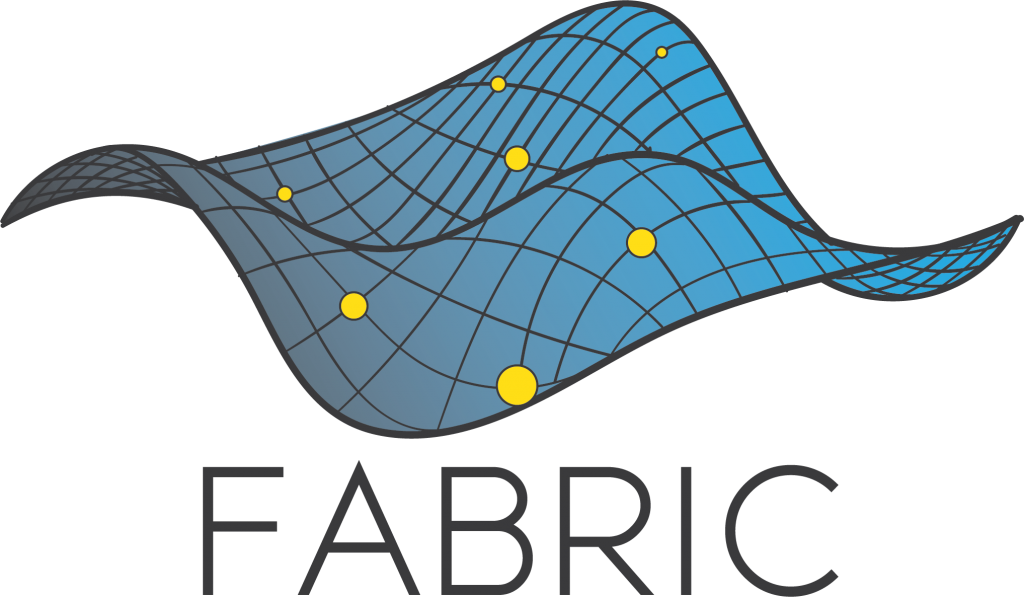FABRIC completes work on the TeraCore ring, creating a unique continental-scale experimental network capable of transmitting data at 1.2Tbps

The NSF-funded FABRIC project has completed installation of a unique network infrastructure connection, called the TeraCore—a ring spanning the continental U.S.—which boasts data transmission speeds of 1.2 Terabits per second (Tbps), or one trillion bits per second. FABRIC previously established preeminence with its cross-continental infrastructure, but the project has now hit another milestone as the only testbed capable of transmitting data at these speeds—the highest being twelve times faster than what was available before. An additional benefit of this infrastructure is to allow FABRIC to federate with other experimental and science facilities at 400Gbps.
“I’m very pleased to learn that the 1.2Tbps TeraCore in FABRIC has been installed and is now operational,” said Deep Medhi, NSF Program Director for FABRIC. “This will provide researchers with unprecedented capability in the FABRIC platform to push data-intensive research that avails the benefit of this capability.”
FABRIC is building a novel network infrastructure geared toward prototyping ideas for the future internet at scale. FABRIC currently has over 800 users on the system performing cutting-edge experiments and at-scale research in the areas of networking, cybersecurity, distributed computing, storage, virtual reality, 5G, machine learning, and science applications. Users now have the capability to test how their experiments run at much higher speeds, including developing endpoints that can source and sink, and protocols that can transfer data at up to 1.2Tbps over continental distances. While previously federated facilities were connected to FABRIC at 100Gbps, with TeraCore becoming operational, the team is also now working to connect several federated facilities at 400Gbps.
“I’m excited for the opportunities that the new 1.2Tbps FABRIC TeraCore ring brings,” said Frank Würthwein, Director of the San Diego Supercomputer Center (SDSC) at UC San Diego. “In the near future, we expect to be able to peer SDSC’s compute and storage capabilities with the TeraCore at 400Gbps by connecting to FABRIC in LA. This will allow FABRIC and Prototype National Research Platform (PNRP) research communities access to unique sets of resources possessed by these platforms, including programmable NICs and FPGAs in both platforms, hundreds of TB of NVMe drive capacity at PNRP, and many others.”
Another reason the TeraCore ring is so instrumental is the fact that much of this research is publicly funded and urgently needed but has been dependent on for-profit companies’ technology. “The advancement to 1.2Tbps brings FABRIC a step closer to making academic research infrastructures more competitive with internet-scale companies,” said Ilya Baldin, FABRIC Project Director. The TeraCore ring opens the door for expanded academic network infrastructure experimentation, thereby accelerating vitally important innovation and discovery. Additionally, this development sets up FABRIC’s infrastructure for future expansion, allowing the possibility to further upgrade portions of the infrastructure as opportunities become available.
The TeraCore ring was built using spectrum from the fiber footprint of ESnet6, the cutting-edge, high-speed network operated by the Energy Sciences Network (ESnet) that connects the tens of thousands of scientific researchers at Department of Energy laboratories, user facilities, and scientific instruments, as well as research and education facilities worldwide.
“The scientific research community needs to be able to share, analyze, and store data as fast and efficiently as possible to solve today’s scientific challenges. Advancements such as FABRIC’s TeraCore ring are a major step in this direction that we’re proud to have helped facilitate,” said ESnet Executive Director Inder Monga.
The FABRIC infrastructure includes the development sites at the Renaissance Computing Institute/UNC-Chapel Hill, University of Kentucky, and Lawrence Berkeley National Laboratory, and the production sites at Clemson University, University of California San Diego, Florida International University, University of Maryland/Mid-Atlantic Crossroad, University of Utah, University of Michigan, University of Massachusetts Amherst/Massachusetts Green High Performance Computing Center, Great Plains Network, National Center for Supercomputing Applications at the University of Illinois Urbana-Champaign, and Texas Advanced Computing Center. FABRIC TeraCore uses optical equipment from Ciena and Infinera and networking equipment from Cisco.
If interested, contact the team at info@fabric-testbed.net to start a conversation around getting your facility connected to the FABRIC infrastructure.
FABRIC is supported in part by a Mid-Scale RI-1 NSF award under Grant No. 1935966, and the core team consists of researchers from the Renaissance Computing Institute (RENCI) at UNC-Chapel Hill, University of Illinois-Urbana Champaign (UIUC), University of Kentucky (UK), Clemson University, Energy Sciences Network (ESnet) at Lawrence Berkeley National Laboratory (Berkeley Lab), and Virnao, LLC.


